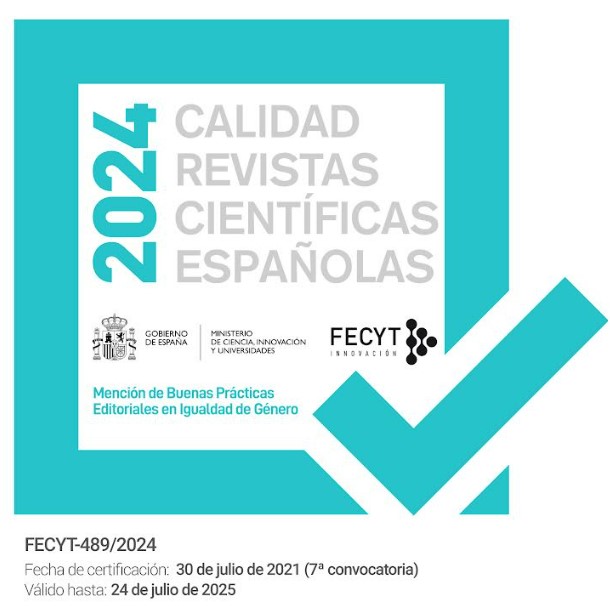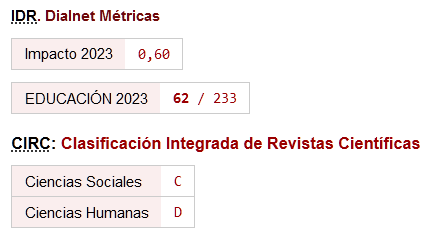Emergency remote teaching of English as a foreign language during COVID-19: Perspectives from a university in China
DOI:
https://doi.org/10.46661/ijeri.5351Keywords:
Emergency remote teaching, online learning, English as a foreign language, COVID-19, engagementAbstract
Given the circumstances of the global pandemic, universities around China and across the globe have suspended face to face (F2F) classes and transitioned to emergency remote teaching (ERT). University students in China have been the first to go through the whole semester’s ERT including College English, a compulsory language course for almost all the first- and second-year students of non-English majors. This article adopted a mixed-methods design, a survey followed by a qualitative visual method, gathered data on students’ experience about ERT of College English and presented an investigation into detailed interactive process of the classes. The data analysis on the learners’ engagement and the feedback from the learners provided a summary of the key threads of ERT classes. This study demonstrated that students held an extrinsic goal orientation, which did not differ from their face-to-face learning experience. ERT granted students more opportunities for interaction with their instructor and peers, while collaboration among students were limited. The research results can be connected to the larger fabric of global language teaching in crisis context, provide empirical lessons to educators, and help instructors with their future decision-making about technology-supported activities.
Downloads
References
Bao, W. (2020). COVID-19 and online teaching in higher education: A case study of Peking University. Human Behavior and Emerging Technologies, 2(2), 113–115. https://doi.org/10.1002/hbe2.191
Berns, A., Isla-Montes, J.-L., Palomo-Duarte, M., & Dodero, J.-M. (2016). Motivation, students’ needs and learning outcomes: A hybrid game-based app for enhanced language learning. SpringerPlus, 5(1), 1–23. https://doi.org/10.1186/s40064-016-2971-1
Bozkurt, A., & Sharma, R. C. (2020). Emergency remote teaching in a time of global crisis due to Coronavirus pandemic. Asian Journal of Distance Education, 15(1), 1–6.
Cho, M.-H., & Castañeda, D. A. (2019). Motivational and affective engagement in learning Spanish with a mobile application. System, 81, 90–99. https://doi.org/10.1016/j.system.2019.01.008
Creswell, J. W. (2012). Educational research: Planning, conducting, and evaluating quantitative and qualitative research (4th ed). Pearson.
Ellis, R., Tanaka, Y., & Yamazaki, A. (1994). Classroom interaction, comprehension, and the acquisition of L2 word meanings. Language Learning, 44(3), 449–491. https://doi.org/10.1111/j.1467-1770.1994.tb01114.x
Eom, S. B., Wen, H. J., & Ashill, N. (2006). The determinants of students’ perceived learning outcomes and satisfaction in university online education: An empirical investigation*. Decision Sciences Journal of Innovative Education, 4(2), 215–235. https://doi.org/10.1111/j.1540-4609.2006.00114.x
Fredricks, J. A., & McColskey, W. (2012). The measurement of student engagement: A comparative analysis of various methods and student self-report instruments. In S. L. Christenson, A. L. Reschly, & C. Wylie (Eds.), Handbook of Research on Student Engagement (pp. 763–782). Springer US. https://doi.org/10.1007/978-1-4614-2018-7_37
Freiermuth, M. R. (2017). ‘I Found It!’ A smartphone GPS treasure-hunting game in a flipped English class. Innovation in Language Learning and Teaching, 11(2), 101–108. https://doi.org/10.1080/17501229.2015.1066793
Gay, L. R. (2006). Educational research: Competencies for analysis and applications (8th ed.). Pearson Merrill Prentice Hall.
Guillemin, M., & Drew, S. (2010). Questions of process in participant-generated visual methodologies. Visual Studies, 25(2), 175–188. https://doi.org/10.1080/1472586X.2010.502676
Gürleyik, S., & Akdemir, E. (2018). Guiding curriculum development: Student perceptions for the second language learning in technology-enhanced learning environments. Journal of Education and Training Studies, 6(4), 131–138. https://doi.org/10.11114/jets.v6i4.2994
Hodges, C., Moore, S., Lockee, B., Trust, T., & Bond, A. (2020). The difference between emergency remote teaching and online learning. EDUCAUSE Review. Retrieved from: https://er.educause.edu/articles/2020/3/the-difference-between-emergency-remote-teaching-and-online-learning
Kebritchi, M., Hirumi, A., & Bai, H. (2010). The effects of modern mathematics computer games on mathematics achievement and class motivation. Computers & Education, 55(2), 427–443. https://doi.org/10.1016/j.compedu.2010.02.007
Kukulska-Hulme, A., & Viberg, O. (2018). Mobile collaborative language learning: State of the art: Mobile collaborative language learning. British Journal of Educational Technology, 49(2), 207–218. https://doi.org/10.1111/bjet.12580
Kuo, Y.-C., Walker, A. E., Schroder, K. E. E., & Belland, B. R. (2014). Interaction, internet self-efficacy, and self-regulated learning as predictors of student satisfaction in online education courses. The Internet and Higher Education, 20, 35–50. https://doi.org/10.1016/j.iheduc.2013.10.001
Li, Q. (2016). Changes in the motivation of Chinese ESL learners: A qualitative investigation. English Language Teaching, 10(1), 112–122. https://doi.org/10.5539/elt.v10n1p112
Li, X., & Song, S. (2018). Mobile technology affordance and its social implications: A case of “Rain Classroom.” British Journal of Educational Technology, 49(2), 276–291. https://doi.org/10.1111/bjet.12586
Liu, N., Lin, C.-K., & Wiley, T. G. (2016). Learner views on English and English language teaching in China. International Multilingual Research Journal, 10(2), 137–157. https://doi.org/10.1080/19313152.2016.1147308
Mohmmed, A. O., Khidhir, B. A., Nazeer, A., & Vijayan, V. J. (2020). Emergency remote teaching during Coronavirus pandemic: The current trend and future directive at Middle East College Oman. Innovative Infrastructure Solutions, 5(3), 1–11. https://doi.org/10.1007/s41062-020-00326-7
Northey, G., Govind, R., Bucic, T., Chylinski, M., Dolan, R., & Esch, P. van. (2018). The effect of “here and now” learning on student engagement and academic achievement. British Journal of Educational Technology, 49(2), 321–333. https://doi.org/10.1111/bjet.12589
Pace, C., Pettit, S., & Barker, K. (2020). Best practices in middle level quaranteaching: Strategies, tips and resources amidst COVID-19. Becoming: Journal of the Georgia Middle School Association, 31(1), 1–13. https://doi.org/10.20429/becoming.2020.310102
Peters, M. A., Wang, H., Ogunniran, M. O., Huang, Y., Green, B., Chunga, J. O., Quainoo, E. A., Ren, Z., Hollings, S., Mou, C., Khomera, S. W., Zhang, M., Zhou, S., Laimeche, A., Zheng, W., Xu, R., Jackson, L., & Hayes, S. (2020). China’s internationalized higher education during COVID-19: Collective student autoethnography. Postdigital Science and Education. https://doi.org/10.1007/s42438-020-00128-1
Pink, S. (2013). Doing Visual Ethnography. SAGE.
Pintrich, P., Smith, D., Garcia, T., & McKeachie, W. (1991). A manual for the use of the motivated strategies for learning questionaire.pdf. The University of Michigan.
Reavey, P. (2012). Visual methods in psychology: Using and interpreting images in qualitative research. Routledge.
Saidouni, K., & Bahloul, A. (2016). Teachers and students’ attitudes towards using mobile-assisted language learning in higher education. Arab World English Journal, 3, 123–140.
Sang, Y. (2017). Investigate the “issues” in Chinese students’ English writing and their “reasons”: Revisiting the recent evidence in Chinese academia. International Journal of Higher Education, 6(3), 1–11. https://doi.org/10.5430/ijhe.v6n3p1
Sintema, E. J. (2020). Effect of COVID-19 on the performance of grade 12 students: Implications for STEM education. Eurasia Journal of Mathematics, Science and Technology Education, 16(7), 1–6. https://doi.org/10.29333/ejmste/7893
Sun, L., Tang, Y., & Zuo, W. (2020). Coronavirus pushes education online. Nature Materials, 19(6), 687–687. https://doi.org/10.1038/s41563-020-0678-8
Sun, Z., Lin, C.-H., You, J., Shen, H. jiao, Qi, S., & Luo, L. (2017). Improving the English-speaking skills of young learners through mobile social networking. Computer Assisted Language Learning, 30(3–4), 304–324. https://doi.org/10.1080/09588221.2017.1308384
Wang, C., & Zhao, H. (2020). The impact of COVID-19 on anxiety in Chinese university students. Frontiers in Psychology, 11, 1–8. https://doi.org/10.3389/fpsyg.2020.01168
Wertsch, J. V. (2008). From social interaction to higher psychological processes. Human Development, 51(1), 66–79. https://doi.org/10.1159/000112532
Zayapragassarazan, Z. (2020). COVID-19: Strategies for online engagement of remote learners. F1000Research 2020, 9(246), 1–11. https://doi.org/10.7490/F1000RESEARCH.1117835.1
Zhang, W., Wang, Y., Yang, L., & Wang, C. (2020). Suspending classes without stopping learning: China’s education emergency management policy in the COVID-19 outbreak. Journal of Risk and Financial Management, 13(3), 1–6. https://doi.org/10.3390/jrfm13030055
Zhang, Y., & Zuo, L. (2019). College english teaching status and individualized teaching design in the context of mobile learning. International Journal of Emerging Technologies in Learning (IJET), 14(12), 85. https://doi.org/10.3991/ijet.v14i12.10704
Zhang, Z., Hu, W., & Mcnamara, O. (2015). Undergraduate student engagement at a Chinese university: A case study. Educational Assessment, Evaluation and Accountability; Dordrecht, 27(2), 105–127. http://dx.doi.org.proxy.library.brocku.ca/10.1007/s11092-015-9213-x
Zhou, H. (2012). Enhancing non-English majors’ EFL motivation through cooperative learning. Procedia Environmental Sciences, 12, 1317–1323. https://doi.org/10.1016/j.proenv.2012.01.428
Downloads
Published
How to Cite
Issue
Section
License
Copyright (c) 2020 Min Huang, Yahui Shi, Xiaoqiong Yang

This work is licensed under a Creative Commons Attribution-NonCommercial-NoDerivatives 4.0 International License.












